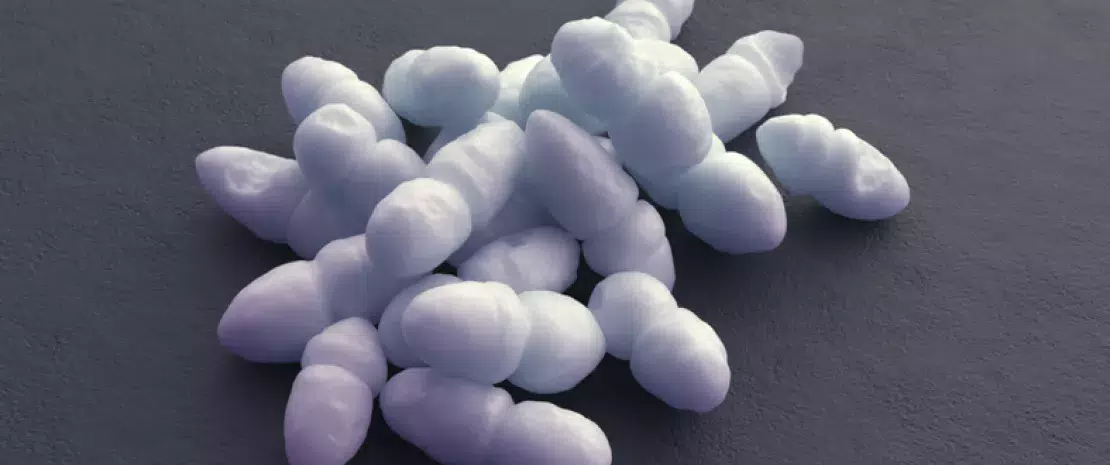S. epidermidis for a healthy nasal microbiota
Symbiosis with Staphylococcus epidermidis could be involved in the maturation of the nasal microbiota during adolescence and the fight against pathogens: this bacterium, protected by a biofilm, could induce production of antimicrobial peptides by the nasal epithelium.
Sources
This article is based on scientific information

About this article
The microbiotas of human epithelia are subject to mucosal immune defense mechanisms and their microbial composition changes significantly in early life during development of the immune system. Their lack of maturation is associated with certain diseases, although the development mechanisms for a healthy microbiota remain poorly understood. The nasal system remains one of the least studied of the various epithelial sites, even though the nostrils can harbor pathogenic agents responsible for serious systemic respiratory infections, such as Staphylococcus aureus or Moraxella catarrhalis. This explains the importance of this study of the nasal microbiota in 467 healthy volunteers across 3 different age groups: 155 children (average age of 5 years), 171 young adults (average age of 19 years) and 141 elderly subjects (average age of 82 years) respectively chosen to represent age groups in which immune status is not yet developed, is mature or is declining.
A characteristic microbiota for each age group
Analysis of the six dominant microbial phyla found that the composition of human nasal microbiota changed significantly with age and that microbial diversity decreased on reaching adulthood. Although Moraxella was predominant in children, this species was almost absent in the other two age groups. The abundance of Staphylococcus was multiplied by a factor of 4.4 during transition to adulthood, to the extent of becoming the predominant species in young adults. The opportunistic pathogen Dolosigranulum pigrum, which can cause upper respiratory tract infections, nosocomial pneumonia and septicemia, decreased by a factor of 2.4 between childhood and early adulthood. Finally, in elderly subjects, the increase of Staphylococcus and decrease of Dolosigranulum observed in young adults were partially reversed.
The protective effect of S. epidermidis
Based on their results, the researchers also proposed a potential mechanism though which one specific species–Staphylococcus epidermidis–, working in tandem with the host’s immune system, could lead to the exclusion of nasal pathogens. S. epidermidis could stimulate the production by nasal keratinocytes of antimicrobial peptides which kill pathogenic bacteria while S. epidermidis is resistant to these peptides due to its biofilm. This mechanism of symbiotic interaction between a bacterium from the human nasal microbiota and the innate host defense could in this way contribute to the exclusion of pathogenic agents, stabilization of the microbiota, and could help the host’s immune system differentiate between pathogenic and commensal bacteria.






